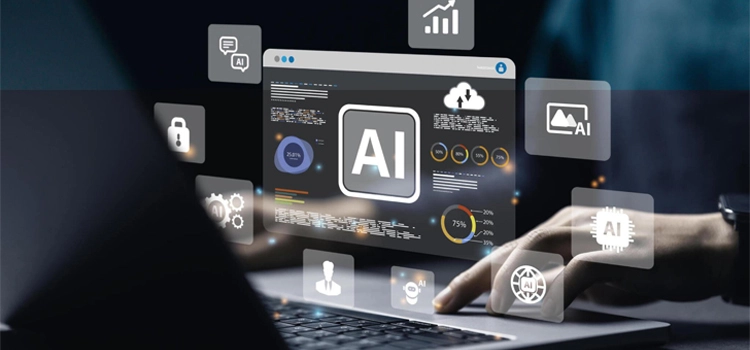Table of Contents
Deepfakes, a portmanteau of “deep learning” and “fakes,” have captured the public imagination. These convincing video forgeries, powered by the Power of AI, can realistically superimpose a person’s face onto another body. While deepfakes have been used for entertainment purposes, a disturbing new trend is emerging: artificial intelligence undressing. This technology raises serious concerns about privacy, security, and our very sense of reality.
From Entertainment to Exploitation: How Could Artificial Intelligence Undressing Be Used for Malicious Purposes?
Imagine a scenario where a seemingly harmless app uses artificial intelligence undressing to alter pictures in your social media feed. Suddenly, celebrities and everyday people alike appear nude. The spread of such manipulated content could be devastating, not only damaging reputations but also causing emotional distress. This misuse of AI technology could be particularly harmful to teenagers and young adults, impacting their body image and self-esteem.
Can You Trust What You See? How Artificial Intelligence Undressing Could Weaponize Deepfakes
Deepfakes are already being used to spread misinformation and sow discord. Artificial intelligence undressing could take this a step further, weaponizing deepfakes to a terrifying degree. Malicious actors could use this technology to create fake revenge porn, targeting individuals for harassment and extortion. The ease with which artificial intelligence undressing could be deployed raises serious concerns. In the wrong hands, this technology could erode trust in online interactions and make it difficult to discern truth from fiction.
Is Anyone Safe? The Potential Impact of Artificial Intelligence Undressing on Personal Privacy
The very concept of artificial intelligence undressing represents a significant privacy violation. Our private images and videos are often shared online, and the idea that someone could manipulate them with such ease is deeply unsettling. The potential for blackmail and harassment is a significant concern. Artificial intelligence undressing could be used to target anyone, from celebrities to everyday people. This technology could have a chilling effect on free expression and self-expression as people become wary of sharing anything online for fear of it being manipulated.
Blackmail 2.0: How Artificial Intelligence Undressing Could Be Used for Extortion and Harassment
Artificial intelligence undressing could usher in a new era of online extortion and harassment. Imagine a scenario where a hacker gains access to compromising photos or videos. With a few clicks, they could use artificial intelligence undressing to create deepfakes that could be used to blackmail or harass the victim. The potential psychological impact of such attacks could be devastating. The anonymity of the internet could further embolden perpetrators, making it difficult to track them down and hold them accountable.
Celebrities or Everyone? Who Could Be Vulnerable to Artificial Intelligence Undressing Misuse?
While celebrities may seem like prime targets for artificial intelligence undressing misuse, the reality is that anyone could be vulnerable. This technology is not limited to high-profile individuals. Anyone with a digital footprint could be targeted. A disgruntled ex-partner, a cyberbully, or even a stranger could use artificial intelligence undressing to create deepfakes for malicious purposes. The democratization of this technology makes it even more dangerous.
A Threat to Self-Esteem: The Psychological Impact of AI-Generated Nudity
The proliferation of AI-generated nudity could have a significant impact on self-esteem, particularly for young people. Constant exposure to unrealistic body images can already lead to body dissatisfaction and social anxiety. Artificial intelligence undressing could exacerbate this problem, blurring the lines between reality and fantasy. The normalization of manipulated images could create a distorted perception of beauty and lead to feelings of inadequacy.
Deeper Fakes, Deeper Problems: How Artificial Intelligence Undressing Could Erode Trust Online
Deepfakes have already eroded trust in online content. Artificial intelligence undressing could take this a step further, making it virtually impossible to know what is real and what is fake. This could have a ripple effect, impacting everything from online news to social media interactions. In a world where deepfakes are commonplace, skepticism will become the norm, making it difficult to have meaningful conversations online.
Can We Regulate the Unseen? Challenges in Addressing Artificial Intelligence Undressing Misuse
Regulating artificial intelligence undressing misuse presents a unique challenge. The technology is constantly evolving, making it difficult to stay ahead of the curve. Additionally, the anonymous nature of the internet makes it difficult to track down and prosecute those who misuse this technology. International cooperation will be essential to develop effective regulations that can address the global threat posed by artificial intelligence undressing.

The Future of Identity: How Artificial Intelligence Undressing Could Blur the Lines Between Real and Fake
The concept of a stable and verifiable online identity is already under strain in today’s digital age. Artificial intelligence undressing could further complicate this issue. With the ability to manipulate images and videos so convincingly, it becomes difficult to know who or what to trust online. This could have a profound impact on social interactions, making it challenging to verify someone’s identity or intentions. The very notion of a real online persona could become blurred, creating a sense of uncertainty and unease.
Beyond the Technology: The Human Responsibility in Preventing Artificial Intelligence Undressing Misuse
The development of artificial intelligence undressing highlights the importance of responsible innovation. While the Power of AI holds immense potential for good, it is crucial to consider the potential negative implications of such technologies. Tech companies, policymakers, and the general public all have a role to play in mitigating the risks associated with artificial intelligence undressing.
Robust regulations that can address the misuse of this technology are needed. However, technological solutions alone are not enough. We also need to foster a culture of digital literacy and critical thinking. Educating people about the potential dangers of deepfakes and artificial intelligence undressing can empower them to be more discerning consumers of online content.
Conclusion
Artificial intelligence undressing represents a disturbing new frontier in the world of deepfakes. The potential for misuse is significant, raising serious concerns about privacy, security, and our very sense of reality. As we move forward, it is crucial to have open and honest conversations about the ethical implications of this technology. We must work together to develop safeguards and promote responsible innovation to ensure that the Power of AI is used for good, not for malicious purposes.




